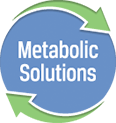Collagen is an extracellular matrix protein that accumulates in tissues during normal wound repair and from chronic exposure to toxicants and irritants, infection, inflammation or oxidative stress. This pathological buildup or fibrosis may ultimately result in organ failure. Research discovery methods are restricted with a slow-turning over protein like collagen. Although pool size changes of collagen content have been used to assess drug-induced alterations in collagen, dynamic changes in synthesis rates offer a better alternative.
Hellerstein and colleagues developed a solution for measurement of slow-turnover proteins. Newly synthesized tissue collagen could be measured using a stable isotope and mass spectrometry technique using heavy water (deuterium oxide) labeling in vivo. This method is sensitive and reproducible for measurement of collagen fractional synthesis.
Pharmaceutical research is searching for antifibrotic treatments. We offer analytical services to measure dynamic fractional synthesis rates of collagen in liver, lung, and skin tissue. Our services include full preparation of tissue hydrolysis and determination of collagen (hydroxyproline) concentration.
List of Fibrosis/Collagen Turnover Services
- Fractional synthesis rates of collagen
- Collagen concentration
- Deuterium oxide labeling methods
- Incorporation of Deuterium or 13C-labeled amino acids into collagen
Fractional Synthesis Rates of Collagen (Deuterium oxide Tracer)
Animal studies in mice and rats can utilize the administration of deuterium oxide in the drinking water (5%) for one week to label hydroxyproline in collagen. A small plasma sample (about 25 uL) is collected at the time of tissue collection to measure the precursor enrichment in body water. Tissue samples are harvested. The tissue is hydrolyzed to determine deuterium enrichment in hydroxyproline and hydroxyproline concentration. Fractional synthesis rates of new collagen can be determined. Treatments of animals with carbon tetrachloride or antifibrotic drugs can also evaluate various interventions.
Collagen Fractional Synthesis Measurements (Deuterium or Carbon-13 Labeled Amino Acid Tracers)
Flooding dose infusions of 13C or deuterium labeled amino acids can be measured into biopsy materials. For example, Babraj et al. administered 13C-proline to humans and measured collagen fractional synthesis rates in muscle using gas chromatography combustion isotope ratio mass spectrometry (GCP-IRMS). The GCP-IRMS separates derivatized amino acids by gas chromatography. The amino acid peaks are then combusted to carbon dioxide gas at 1000°C, which is analyzed by isotope ratio mass spectrometry. We can detect enrichment levels of 0.001% of carbon-13 with accuracy and precision.
Applications
The following examples offer protocols useful for studying various aspects of collagen.
| Application | Reference |
|---|---|
| Measurement of Liver Collagen Synthesis | Measurement of liver collagen synthesis by heavy water labeling |
| Collagen Synthesis in Human Muscle | Collagen synthesis in human musculoskeletal tissues |


